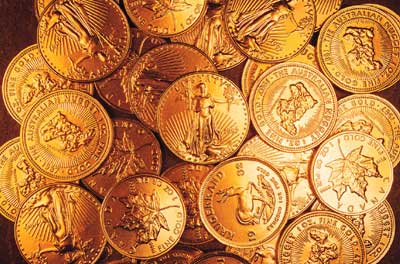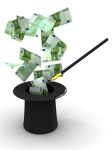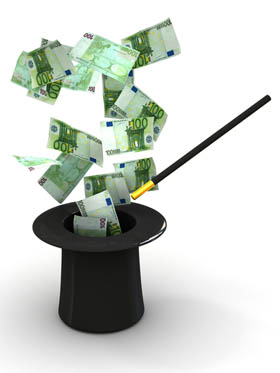submitted by jwithrow.
While gold and silver prices have declined in 2013, the fundamental case for owning gold and silver bullion is still growing.
The mainstream media has been quick to pronounce the death of the precious metals as an asset class with their evidence being the recent price depreciation of both gold and silver. Theirs is a very short term and self-serving view; the long term fundamentals have not changed.
The Federal Reserve did taper its money printing, but guess what? The creature from Jekyll Island is still creating $75 billion new dollars every single month to purchase U.S. Treasury bonds and mortgage backed securities. Meanwhile, Congress has quietly done away with the sequester spending ‘cuts’ and will continue to spend gargantuan amounts of money in 2014 – money they do not have.
What’s so humorous about this is the fact that the sequester did not cut any real spending in the first place – it simply curtailed proposed future spending increases. We suppose the thought of curtailed spending increases kept the Congress critters up too late at night.
And it’s not just the U.S.
Japan has promised to continue to keep their central bank money printer on turbo gear. Estimates suggest that the U.S. and Japan together will create nearly $2 trillion over the next 12 month period. Meanwhile, the Eurozone experiment is still on the verge of blowing up and not one single G-20 country operates with a balanced budget.
Simply put, the economies of the developed world have run up massive amounts of debt that cannot possibly be paid back in full. The massive debt has been serviced primarily by central bank funny money up to this point, but we are quite sure that the funny money policies cannot possibly last forever. And the longer the printing presses continue to run, the less valuable our paper currencies will be.
That’s why we adamantly believe that gold and silver bullion will be a vital part of a diversified portfolio in the coming years as the economic endgame of central bank funny money policy plays out.
Now, we don’t think it would be prudent to hold 100% of one’s assets in gold and silver. We look at the precious metals more as insurance against destructive monetary policies. Oh, and we should probably clarify that we mean physical gold and silver bullion in your possession, not an ETF.
So if you expect the value of your paper currency to increase then you may not be interested in holding gold or silver bullion. But if you expect the value of your paper currency to decrease then purchasing gold and silver bullion may be very wise. Given the long term fundamentals, we would suggest that the value of our paper currency is ultimately only going to go in one direction.
And that direction is back to paper currency’s inherent value…





